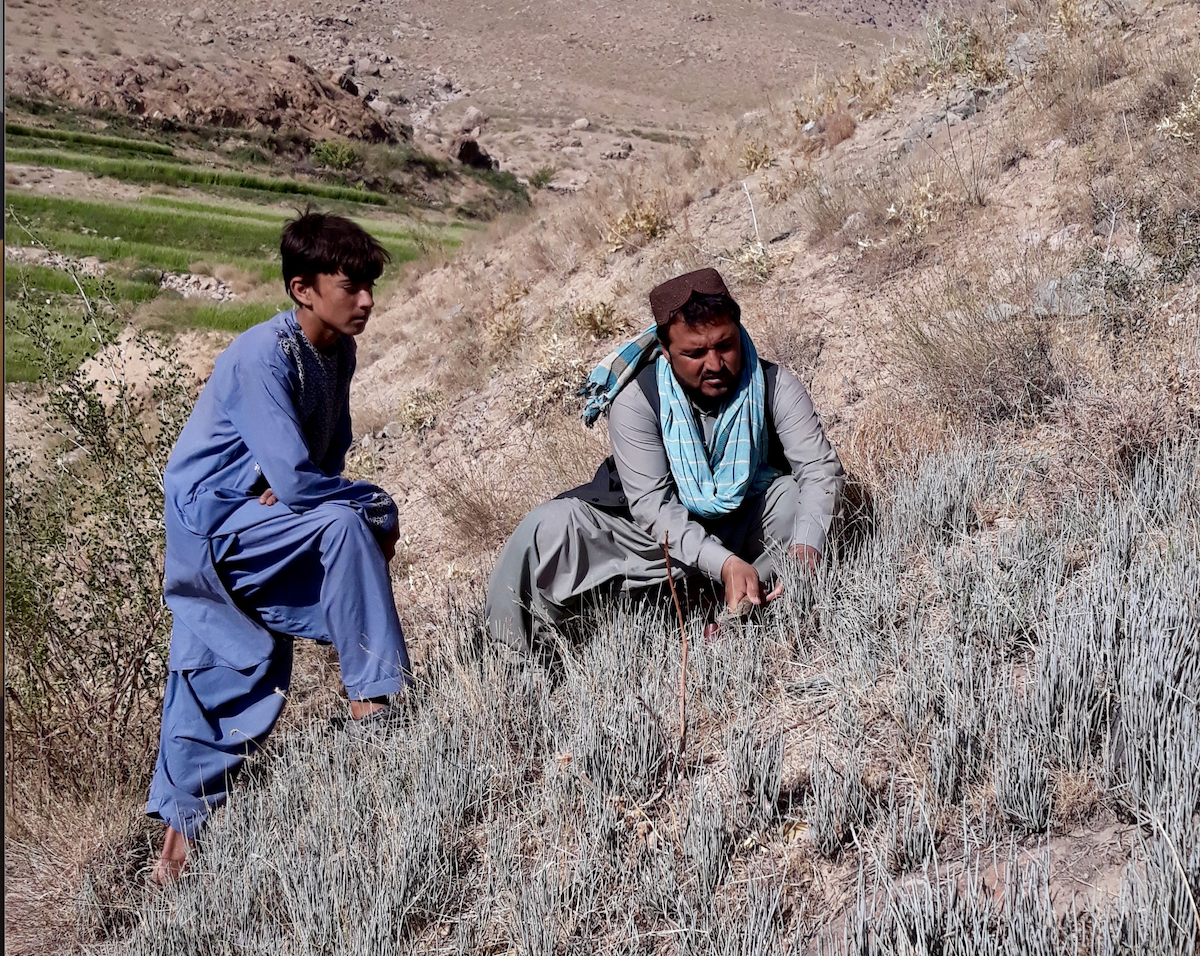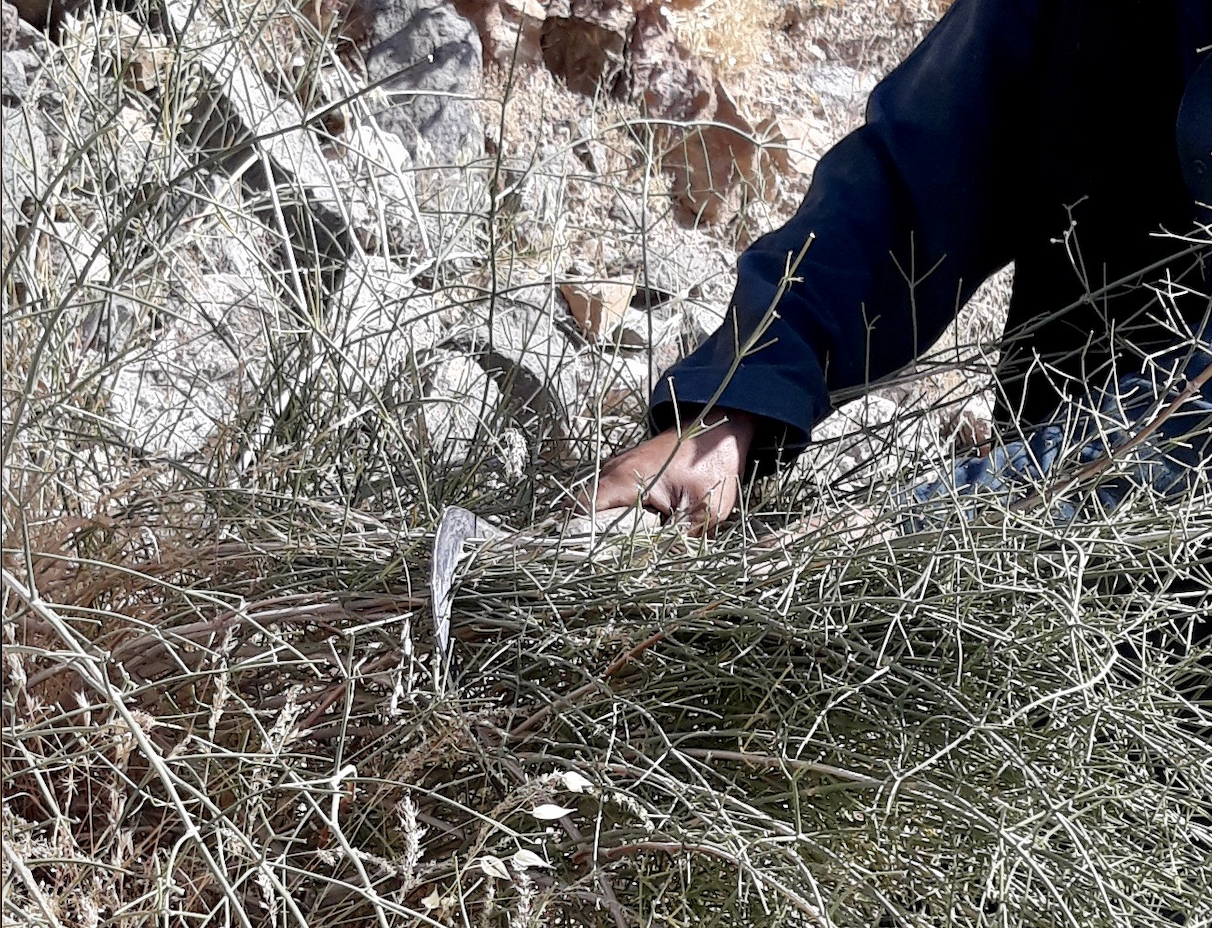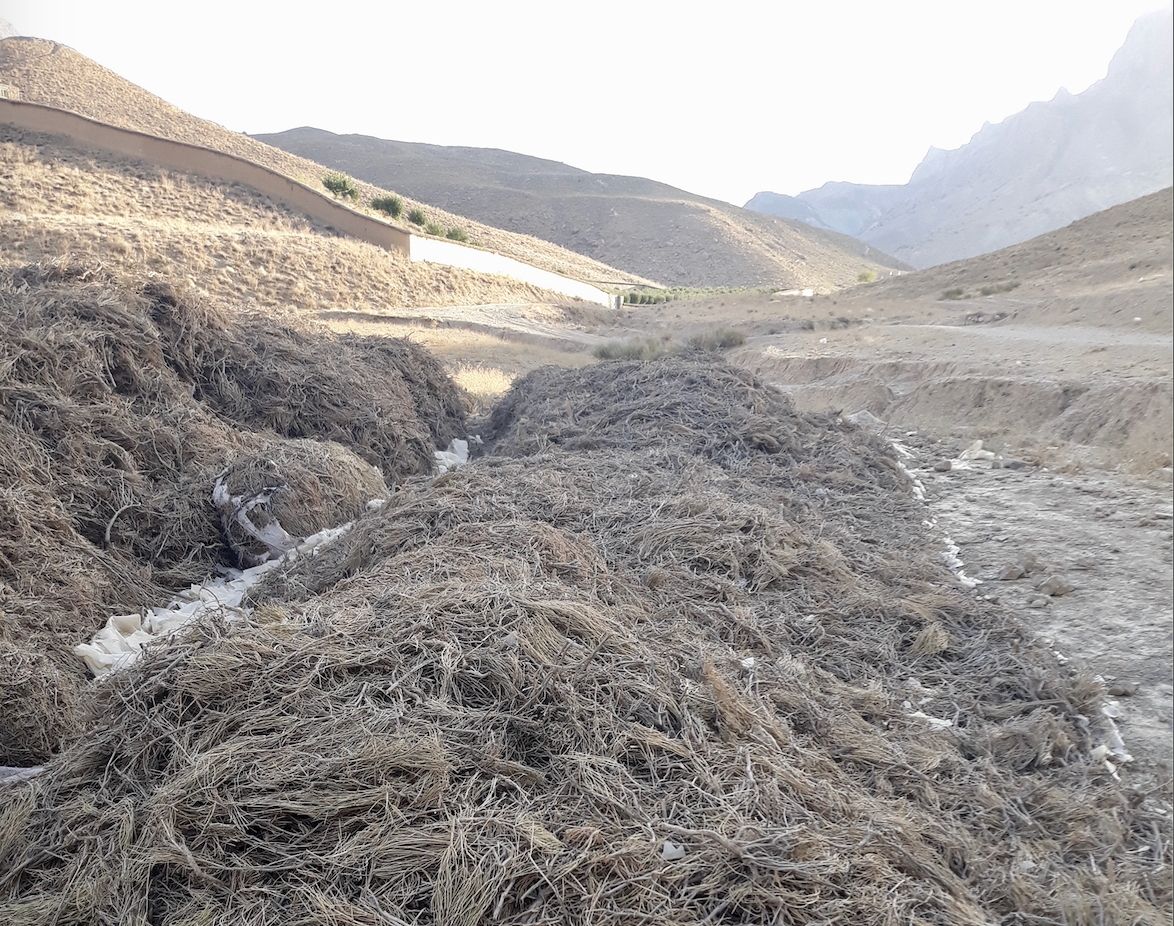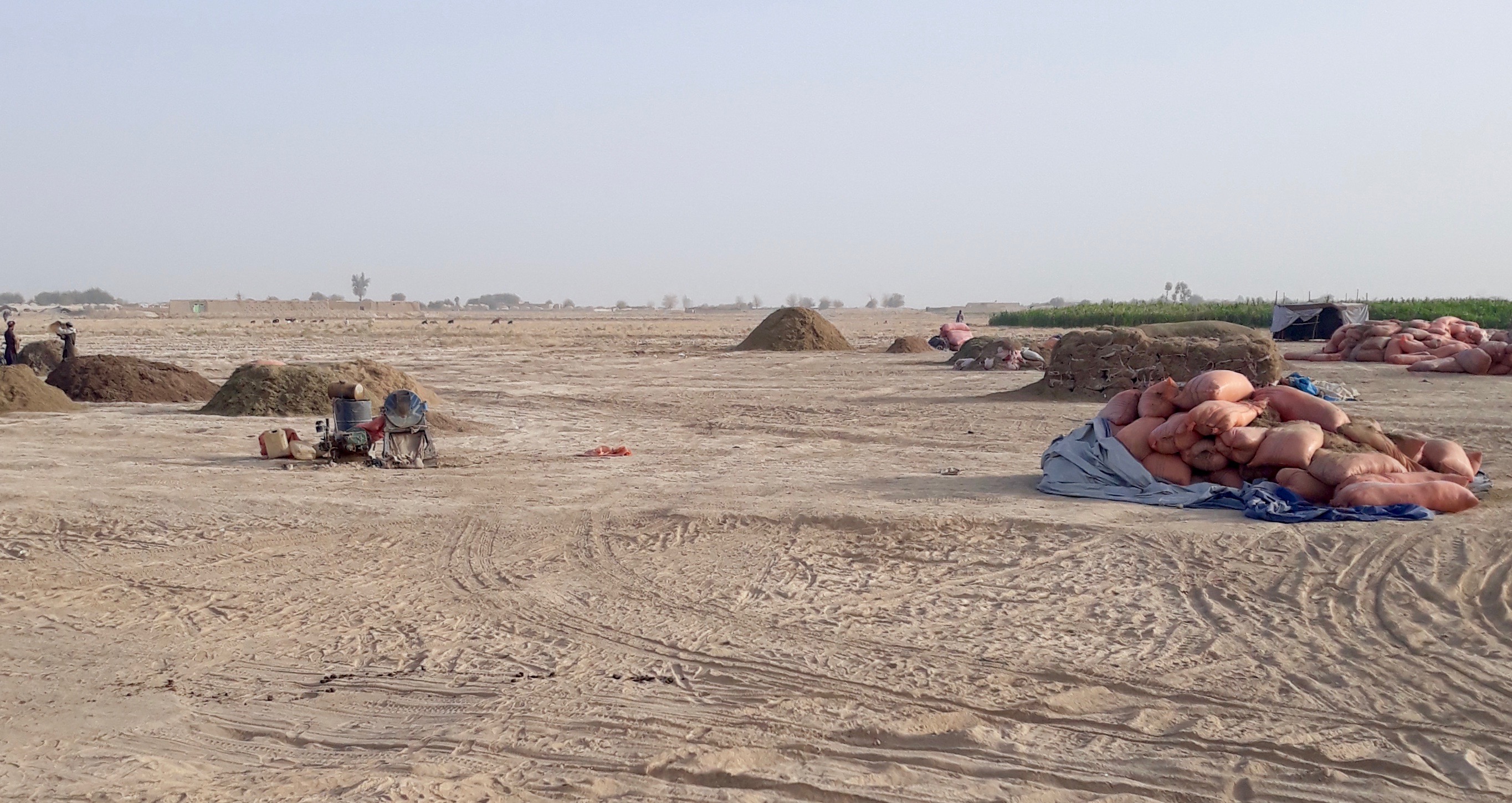It all started with a mysterious white plastic barrel filled with green goo. In 2018 in the southwestern Bakwa province of Afghanistan, a team of Afghan fieldworkers were investigating the impact of U.S. aerial bombing campaigns against opium labs earlier that year. Alongside disused farmhouses destroyed by B-52s and F-35s, the team, led by David Mansfield, a senior fellow at the London School of Economics International Drug Policy Unit, found a lab containing barrels filled with oozing shredded plant matter steeping in water.
The team had stumbled upon a new cheap and easy route to making methamphetamine via the plant ephedra. The technique is fueling a rise in the production and use of the drug in the region, according to a new report the team published Monday.
“The large-scale production of meth using ephedra is a game-changer,” Mansfield said. “Meth seizures in Afghanistan have soared—and drug workers are reporting massive increases in use. We are documenting a major new and growing drug industry in Afghanistan.”

Alongside opium poppy and heroin, the huge profit of the drug trade has now inflated the value of a previously ignored and nearly worthless mountain shrub known to locals as oman—creating a domestic industry in methamphetamine production in Afghanistan, a country with scarcely any history of meth use. This has helped feed a rising problem of meth use among Kabul’s 150,000 heroin users, said local drug workers, affecting a country already reeling from poverty, war, and addiction.
That meth could be made from an herb has long been known by chemists, but using ephedra as a means of mass-producing the drug has never been feasible due to the quantity of raw material needed. But combine economic motivation, a rising demand for meth among drug users in Kabul, and poor farmers willing to work for $30 a day harvesting the wild crop, and you have all the ingredients for a novel, innovative industry.
Whereas gooey opium latex is boiled in steel barrels to make morphine base, which then becomes heroin, the substance Mansfield’s team found was a strange herbal extraction from a grasslike substance. “My researchers asked around to find out what it was, and word came back: it was some kind of plant, a wild shrub or perennial, that was being gathered by harvesters from the 2400-meter [8,000-foot] mountains of the Ghor province,” Mansfield said.
“We spoke to more people, and we found it was being harvested by men and boys with small sickles, dried, shredded, and sold at the foot of the mountains to traders who would drive it to market. There, it would be sold to lab owners to make crystal methamphetamine.”

In the past the crop was used as winter fuel, oman harvesters, all of whom requested anonymity, said. “We sell it by the man [a local weight measure equal to about 4.5 kgs, or 10 pounds]," one picker told Mansfield's team. "It is sold in my village to traders who come from Delarem [a city in the northern part of Nimruz Province, in southern Afghanistan]. In the past it was sold in the district bazaar for firewood. The business started three years ago when traders started to come to the village."
Another oman picker told the researchers, “It has grown in the mountains for a very long time; it grows wild. No one cares for it, people just go to the mountains during harvest time. When I have free time, I go to the mountain. In one season I work for 30 days on the harvest and can collect up to 10 man [45 kg, or 99 lbs] in one day."
Afghan drug producers had traditionally used decongestant medicines containing pseudoephedrine as the base material for conversion into meth, Mansfield said. But locals with knowledge of the meth trade told the researchers that oman had cut the costs for meth lab owners in half inside just a few years, leading to a boom in the trade for the herb and the drug it produces.
Researchers on Mansfield’s team said that no one knows how Afghans discovered the plant’s alkaloid content, which is what makes it possible to create meth. What is certain is that oman is an Afghan species of ephedra, a hardy perennial harvested in August each year that contains relatively high concentrations (around 2.6 percent) of the stimulant ephedrine, which was used in the west in the 1950s as a treatment for asthma. Ephedra has been used in traditional Chinese medicine for the same bronchodilating stimulant purposes for several millennia, and is known there as ma-huang. Bodybuilders worldwide use ephedrine, the isolated alkaloid, to suppress appetite, though there is no evidence it is in any way performance-enhancing.
“It is a wild crop, no one cultivated it. It doesn’t have life, it has no flower. It is just like a small stick. It grows from March to October but when winter comes, growth stops,” a picker told researchers.
In Afghanistan, oman had historically been sold in small quantities to traders as a traditional medicine and cough remedy. But the LSE team soon learned that teams of hundreds, perhaps thousands of subsistence farmers in the foothills of this austere highland area were bringing down hundreds of pounds of the plant each week. “One 15-ton lorry of dried oman can make 265kg [584 lbs] of meth,” Mansfield said. “Some guys told us they were making ten trips a year.”
“I have my own truck,” an oman trader told Mansfield's team. “For two years, I have transported oman from Taywara to Gulistan, sometimes to Bakwa. I also transport oman from Tulak. With this business, I can repay my loan."
Another trader said: “For three years I have come here [location anonymized] to buy oman. I stay here for four months." He said that over the season he buys and sells 130 metric tons of the plant.
The epicenter of the oman trade is the Abdul Wadood Bazaar in Bakwa, in the Farah province. There, traders buy and sell the plant along with glass flasks, solvents, acid and iodine. Most of this kit is not used in the heroin trade, indicating a strong and developing local market around ephedra. The market was bombed by the U.S. military in April 2019. Locals now simply trade from inside their homes, the researchers said.
“There is a burgeoning mountain-gate trade in ephedra directly linked to Bakwa, Farah province, where many of the meth labs are concentrated,” Mansfield said. “The research shows meth cooks have shifted from using decongestant as the principal ingredient to using the ephedra plant.“
High-resolution imagery shows a growing number of labs complete with soakaways [holes in the ground filled with rubble to drain away used liquid materials] not used in opiate production—and a large and growing wholesale market for ephedra, which has been the target of two raids by Afghan Forces,” Mansfield said.
U.N. data shows a sharp spike in meth seizures in Afghanistan from 9kg in 2014 to the 127 seized in 2017. Annual seizures hit 180kg in 2018 and have already reached 650kg in the first half of 2019, according to the United Nations Office on Drugs and Crime (UNODC). “Methamphetamine seizures for the first six months of 2019 exceed those for the entire 2018,” said Mark Colhoun, of the UNODC in Afghanistan.

One hawar (450g) of ephedra sells for $284 in Bakwa. This can make 12 kilos of ephedrine, meth cooks in Bakwa told the LSE researchers. That can be converted into 8kg of crystal meth using freely available chemicals including toluene and iodine.
One kilogram of meth sells for $316, and around $2,500 for all 8kg, said Mansfield, adding that there is no evidence yet of herbal meth being exported out of the country. Broken down into street deals in the capital, Kabul, each kilo can be sold on for as much as $10,000-$12,000 according to Murtaza Majeed, a street worker with Harm Reduction Afghanistan. He said meth has taken a firm grip on the city’s heroin users in recent years.
Meth first appeared in Kabul in 2014, Majeed said. Heroin users were told by dealers it would help them beat their opiate addiction, and after a honeymoon period of cranked-up stimulation, many have ended up addicted to both drugs and some are now suffering chronic amphetamine psychosis.
Majeed estimated that up to 95 percent of all Kabul’s 100,000 to 150,000 injecting heroin users now use meth as well. “They smoke it, mainly, but some injecting is also starting now. I think we will soon see an epidemic of meth injection,” he said.

Meth costs $3 for a quarter-gram hit, while heroin costs $2 a dose. The two drugs are used in conjunction, much as heroin is used after cocaine to ease the stimulant comedown. The drug is sold in an area called Maranjan, in the centre of Kabul, Majeed explained. Corrupt police take kickbacks from local dealers, who live in tents nearby and sell to anyone from teenagers to 75-year olds. “There are 500-1,000 people buying meth and heroin there every day,” he said.
In April 2019, U.S. forces and Afghan allies bombed what they claimed were 68 meth labs in the Bakwa region. The impact of these raids was exaggerated by Afghan officials. But the fact that USFOR-A operatives were able to locate and destroy this many labs in a single day does indicates the scale of the trade—a trade that would never exist without the profit-inflating nature of drug prohibition.
Local media reported that 150 “Taliban terrorists” were killed in the attacks, though both the number and nature of that claim is disputed. Residents and drug users say that since the raids, perhaps due to a glut of meth and oman, prices have actually plummeted, both for oman and for meth, and that supply remains uninterrupted.
Sign up for our newsletter to get the best of VICE delivered to your inbox daily.
from VICE https://ift.tt/2pn9o7j
via cheap web hosting
No comments:
Post a Comment